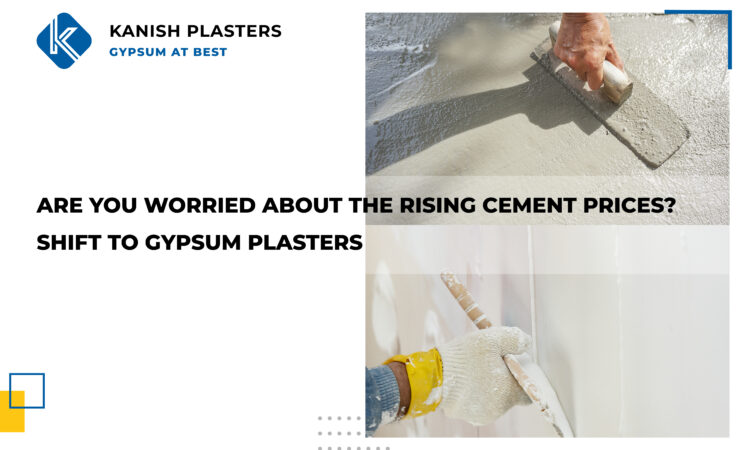Gypsum plasters is better than Cement Plasters
Cement prices in India have been rising since March’21. If you have been closely monitoring the price fluctuations in the cement market, you could have noticed that there was a drop in cement prices since June 2020 due to lockdowns imposed by the government to contain the spread of COVID-19. The cement prices began to surge in March 2021, where there was a 6% month-on-month increase. It is a whopping 75% higher than what it was during the same month, the previous year. This has paralyzed the Indian real estate sector and has delayed construction projects as builders are struggling to complete the construction of the already agreed projects. The surge has come at a time when the industry was grappling to recover, post the second wave of the pandemic.
The rise in the cost of inputs, say raw materials, electricity, etc., and transportation costs have produced this sudden spike in cement prices. Time has never been more appropriate for construction companies and builders to migrate towards an affordable, cost-effective, more sustainable, and nature-friendly material like the gypsum.
Gypsum plastering reduces the cost of construction as it saves around Rs. 45 per sq. ft. when compared to using cement plasters. Apart from cost savings, gypsum plastering also consumes a lower amount of resources than cement plastering. Say, gypsum plastering saves around 30 liters of water per sq. ft. as it does not require water curing. With cement plastering, it is a mandate that the wall has to be sprayed with water for at least 7 days. For tall and high-rise buildings, construction experts recommend the usage of gypsum plasters as they have higher compressive strength and lower density than cement plasters. Gypsum plastering reduces the plastering weight by about 35% than cement plastering and this increases the resistance of buildings to high-speed winds.
Gypsum-plastered buildings have low thermal conductivity and have optimal humidity inside. This produces a salubrious internal environment and reduces cooling and heating requirements, producing huge savings in electricity bills. Gypsum plasters gain their strength spontaneously within 48 hours of application, unlike cement plasters that take at least 15 days to reach their inherent properties.
Even before this cement price rise, environmental activists have been voicing against the over-extraction of sand and on the increasing cement usage in buildings due to high emission of harmful GreenHouse Gases from cement industries. Gypsum is an organic mineral formed from the evaporation of water and deposited at the beds of the sea, lake, etc. Shifting from the conventional cement plaster to using gypsum plasters solves the problem of not just the price increase, but also saves the environment from ill effects of cement usage and continuous sand exploitation.
It is almost impossible to find another material that has all the properties of gypsum. Thus, ‘NOW’ is an appropriate time for builders and construction companies to shift towards gypsum plastering and other gypsum-made products to tackle the cement price hike, to construct buildings in a short time and at low cost, to reduce carbon emissions, and to lower environmental hazards.


